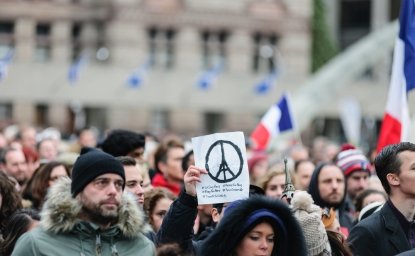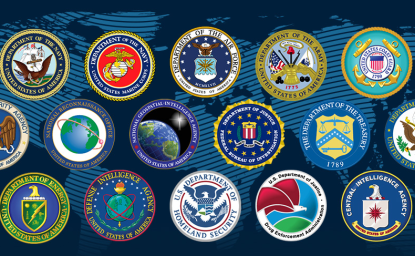Holy Terror: The Spread of Jihad’s Wrath
The evolution of Islamist extremism has left the West scrambling to respond to an ever-changing, highly adaptable, and often unpredictable opponent.
The evolution of Islamist extremism has left the West scrambling to respond to an ever-changing, highly adaptable, and often unpredictable opponent.
In hideous bursts throughout history, religious extremism has defined the lexicon of violence: Jewish Zealots killed ruthlessly, even poisoning public water, an early form of chemical warfare, in the first century. Muslim Assassins—originally hashashin after the hash consumed before campaigns—murderously assaulted their rivals and Christian Crusaders in the 11th century. Over six centuries, Hindu Thugs strangled an estimated half million people as sacrifices to their goddess of destruction.
These groups are all gone. But their legacies live on in the adjectives used to describe today’s Muslim extremists, including al Qaeda and Hezbollah and the newest and deadliest of them all, the Islamic State of Iraq and Syria (ISIS).
The current angry Jihad against the West--which has distorted the word’s original meaning--is not a coordinated phenomenon. It has many faces. It is often more decentralized than it seems, with an original ideologue or core ideology inspiring rather than specifically orchestrating attacks by franchises. The Muslim commandos are not necessarily allies either; some are deadly rivals who terrorize each other. Their tactics and agendas are as diverse as their backgrounds, even though they emerged from common factors in the 1970s: The failure of secular ideologies, military losses in the 1973 Arab-Israeli war, the emergence of political Islam in Iran’s 1979 revolution, and the first modern holy warriors borne of the Soviet Union’s 1979 invasion of Afghanistan.
The first phase of attacks against the West began in Lebanon in the 1980s, propelled by the combination of the 1982 Israeli invasion and a U.S. mission that evolved from peacekeeping to military intervention. The early suicide bombs--a trifecta against two U.S. embassies and Marine peacekeepers in Beirut by embryonic cells of Hezbollah—heralded a new type of asymmetric warfare against major powers. The goals were then largely limited to driving out foreign forces. The tactic spread from Shiites to Sunni groups in the late 1980s, notably among the Palestinians trying to seize political space and territory.
The second phase in the 1990s featured more ambitious targets beyond the region. The most infamous cases, following the rise of al Qaeda, were its first bombing of the World Trade Center in 1993 and the simultaneous attacks on two American embassies in Kenya and Tanzania in 1998.
The third phase witnessed terror innovation unimaginable even to the world’s big-budget intelligence agencies. It began with the September 11 airplane bombings of the World Trade Center’s twin towers and Pentagon. Western nations were unable to keep up. Big bombs by al Qaeda notably targeted public transportation—rush-hour trains killed almost 200 in Madrid in 2004, and four suicide bombers murdered dozens on London subway trains and a bus in 2005.
The fourth phase evolved from the intersection of the U.S. military interventions in Afghanistan and Iraq with the Arab Spring. The world’s mightiest military forcibly pushed back the Taliban and key wings of al Qaeda. It even captured and killed Osama bin Laden.
But extremists are more nimble than bureaucratic military machines. With deadly determination, they adapt. Since 2011, they have tapped into the chaos of political instability, crumbling states, an abundance of local arms, and war zones that offered political opportunities and operational space. Most painfully, the United States forced an al Qaeda wing out of Iraq, only to see it regroup and repackage itself in neighboring Syria, then march back into Iraq. The initial American intervention, ultimately and unintentionally, produced ISIS.
The fifth and current phase was marked, in mid-2014, with the declaration of the pseudo-Islamic State carved from the debris of Syria’s civil war and the dysfunctionality of Iraq. The venomous caliphate, roughly the size of Indiana, is a composite of the broader evolution of extremism among both Sunnis and Shiites over the past three decades: Underground cells have now grown into powerful militias, even well-equipped armies. They have claimed political space and created institutions in their ideological image. They have developed economic engines to sustain themselves. And, as in Paris, they are taking their carnivorous campaigns across oceans. They even have the pretense of becoming global powers.
The opinions expressed here are solely those of the author.


Learn more about Hamas and how it relates to similarly aligned organizations throughout the region. Read more



